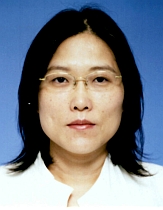
Keiko Toyoda, MD
The concept of IgG4-related disease (IgG4-RD) was first proposed by Hamano1 in 2001, and Japanese investigators have subsequently continued to play a leading role in defining its clinical spectrum and diagnostic criteria. In 2001 and 2002, Hamano et al1,2 reported autoimmune pancreatitis (AIP) associated with increased serum IgG4 levels and characterized histologically by lesions with abundant IgG4-positive plasma cell infiltration, fibrosis, and obliterative phlebitis. Subsequently, many extrapancreatic lesions, including sclerosing cholangitis, sclerosing sialadenitis, retroperitoneal fibrosis, interstitial pneumonia, and mediastinal fibrosis, have been reported to show similar histopathologic features and an association with increased serum IgG4 levels. Such lesions may develop with or without AIP. In radiology numerous reports from Japan on the chest and abdomen have continued to appear. Initially, reports on the head and neck were few because the disease had only been newly recognized, and the condition originally referred to as Mikulicz disease was first reported to be part of the spectrum of IgG4-RD by Yamamoto and other Japanese physicians. In the head, neck, and brain, manifestations of IgG4-RD include enlargement of salivary and lacrimal glands, inflammatory pseudotumor, pituitary lesions, thickening of the dura mater/pachymeningitis, thyroid lesions, and others. We have undertaken multi-institutional case conference meetings with presentations of IgG4-RD images in the head and neck region. Even though the number of such cases at individual institutions has been small, based on this experience we have been able to summarize the imaging findings of IgG4-RD.
Based on our results, the diagnosis of IgG4-RD should be considered in patients presenting with T2-hypointense lacrimal gland, pituitary, or cranial nerve enlargement, or a T2-hypointense orbital mass, especially if multiple